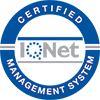What is vacuum metallization?
What is vacuum metallization?
Vacuum metallization generically means sublimation and condensation or deposition onto a substrate of a thin metal film at a low atmospheric pressure of about 10-4 mbar. The low pressure (vacuum) enables the metal molecules to move from the source of evaporation to the surface substrate avoiding contact with air and other gas particles. The initial step, a plasma treatment, cleans the substrate and enhances adhesion. After pre-treatment the aluminium is deposited onto the substrate from 0.01 microns to 10.00 microns. The final cycle step in almost all cases is a plasma polymerization coat, which adds protective properties. These steps occur all in one vacuum metallization cycle. Before the cycle begins and after it has been completed, as an option, a varnish base and top coat may be applied. The base coat to seal and remove imperfections. The top to protect from oxidation, chemical corrosion, mechanical damage and wear.
What is vacuum sputtering?
What is vacuum sputtering?
Vacuum sputtering involves a metal plate or target being placed in the vacuum coating chamber with the parts to be coated. This method is one of the most flexible PVD (Physical Vapour Deposition) processes. The system is brought down to low pressure and a gas is introduced (argon in this case as it has a high atomic weight). A high voltage is applied to the target and the positive argon ions accelerate and expel the atoms on the plate, which then fall onto the 3D substrates condensing and creating the programmed metal coating. The impact of the atoms on the evaporating material produces “sputtering” due to the ion density. There is no fusion of materials in this technology, therefore multiple metals and alloys can be deposited in a cold, dry environment with efficiency and precision. Applications can range from 0.01 to 10.00 microns or even a “flash” semi-transparent metal coating
Can a machine do metallization, sputtering and PECVD in one single process cycle?
Can a machine do metallization, sputtering and PECVD in one single process cycle?
Yes! When requesting a vacuum system, you must consider the future applications and production expansion possibilities. Today production of a simple metal coating and tomorrow, with a hybrid system, sputter coat chrome door handles or automotive interior parts. Adding PECVD creates a barrier effect to seal and protect your finished product. The current market for vacuum coating is growing exponentially. Therefore a hybrid option offers unlimited production possibilities.
What materials can be coated in vacuum metallization and sputtering systems?
What materials can be coated in vacuum metallization and sputtering systems?
You can coat almost any material in a vacuum coating system: wood, glass, plastic, metal, leather and textiles to name just a few. Finished products such as electronics, wheels, mirrors, automotive parts, packaging of almost any dimension and fashion accessories including shoes, handbags, buttons and jewelry all benefit from added value decorative properties as well as hydrophobic results.
Why must a product be varnished to be vacuum metallized/sputtered?
Why must a product be varnished to be vacuum metallized/sputtered?
A 3D substrate needs to be smooth, uniform and blemish free to allow for perfect adhesion of the metal before going into the vacuum coating process, as metal coating will enhance and magnify any surface defects. Therefore, parts should be injected mirror-like or should be varnished with a base coat before being placed in the process chamber. After exiting the chamber, aluminium metallized pieces with few exceptions, need a top coat of varnish to prevent oxidation, chemical corrosion, wear and preserve the glossy metal finish for added value and extended product life.
With few exceptions, the sputtering process almost always includes a base coat and top coat of varnish depending on the end use of the piece and how it is presented for coating. For example, if the piece has been injection moulded with a perfect sheen and lacking any surface defects, there may not be the necessity for a base coat of varnish. After metal is deposited, an additional plasma coating may be applied within the sputtering cycle or the piece may require a top coat of varnish. In specific cases, plasma and varnish are applied. All these variables are determined by the end use of the product.
Can I achieve a colored surface after metallization?
Can I achieve a colored surface after metallization?
Yes! After the metallization process you can add colored pigments to the transparent varnish in order to obtain a colored metallic surface (red, green, gold, blue, etc.). This varnish serves to protect the piece from oxidation and ensures against solvents and cleaning agents damaging the brilliant glossy finish.
Besides aesthetic added value, what other properties can metal coating offer?
Besides aesthetic added value, what other properties can metal coating offer?
Many applications are decorative, yet a substrate of metal coating can increase the life of a product due to the protection it offers. A metal coating can decrease static electricity, render a part more reflective and increase conductivity. In the automotive world, the chrome sputtering process has been proven to be more durable, ecological and weigh less than chrome plating. Studies have shown that chrome sputtering can increase the lifespan of an unprotected product tenfold.
What is PVD?
What is PVD?
Physical Vapour Deposition (PVD) describes a variety of vacuum deposition methods used to deposit thin films by the condensation of a vaporized form of the desired film material onto infinite parts (automotive, aerospace, optics, packaging, cosmetics etc.). The coating method involves purely physical processes such as vacuum evaporation with subsequent condensation, or plasma sputtering. Sputtering involves a glow plasma striking the material to be deposited, a metal target or magnetron, in which some of the material is sputtered away as vapour to fall on the substrates in the chamber. In the coating world, it is the newest ecological alternative to traditional chrome plating that has been used for billions of parts. This is because it has been proven to increase durability and weigh less than chrome coating. Physical vapour deposition has gained popularity for many reasons, including that it enhances a product’s durability. In fact, studies have shown that it can enhance the lifespan of an unprotected product tenfold.
What is Plasma?
What is Plasma?
Plasma is the 4th condition of matter. Plasma occurs when neutral molecules, positive ions and free electrons are all present at the same time. Plasma is used for multiple purposes: to clean and prepare the substrate to receive any coating in a uniform manner. It also improves adhesion of the metal in PVD: for the same purpose at the end of the PVD cycle, plasma is applied for protective purposes and added properties such as creating a barrier layer.
What is PECVD?
What is PECVD?
Plasma Enhanced Chemical Vapour Deposition (PECVD) is a process used to deposit transparent thin films from a gas state to a solid state on a surface. Vacuum systems using PECVD offer a transparent protective layer, which when applied, bonds to a substrate offering protective properties ( such as hydrophobic results and anti-corrosion ). The coating bonds to the product surface at a nano level, which means it becomes inseparable from it and is as durable as the material it protects. The coating is one thousand times thinner than a human hair, to the naked eye and can't be felt.
How much does vacuum coating cost?
How much does vacuum coating cost?
The cost of vacuum coating depends on the dimension and quantity of parts to be coated, the number of cycles in an hour, work shifts in a day and the process cycle requests: plasma, thickness of metal coating/choice of metal and possibly a final plasma coating. Then there is the question of varnishing. The parts may need a coat of base varnish and after vacuum coating, a top coat of varnish. All these variables are dependent on the end use of the product and the initial production, such as plastic injection moulding. Statistics show that vacuum coating costs 1/6 the cost of the chrome electroplating.
What sectors of industry vacuum coat their products?
What sectors of industry vacuum coat their products?
The sectors of industrial manufacturing using vacuum coating technologies are an endless list: automotive, optical, packaging, aerospace, military, solar, plumbing, costume jewellery, home décor, furniture, fashion, medical, food and beverage containers, building materials, research and development and on and on.
Must a vacuum coating operator have special training and knowledge?
Must a vacuum coating operator have special training and knowledge?
Today systems have user friendly software. 24/7 internet connections also provide quality assurance and assist with routine running of a plant. Therefore, any worker can be a vacuum coating operator after a few simple instructions. The computer program has the cycles memorized with all the parameters to coat each product, therefore what industry calls a “plug and play” operation.
Is vacuum coating ecological?
Is vacuum coating ecological?
Yes! Vacuum coating is a chemical free process using nanotechnology. The industrial world of the past used grinding and milling to move atoms. A clumsy, expensive, toxic way to produce materials. Today nanotechnology used in vacuum coating, the metals used are in infinitesimal quantities, allows industry to manipulate molecules and atoms on a tiny scale-one billionth of a meter. This pollution free manufacturing technology produces negligible waste and minimal energy is used to realize products that are amazingly light, economical, strong, intelligent and durable.
What consumable materials are used in vacuum coating?
What consumable materials are used in vacuum coating?
Vacuum metallization uses aluminium wire, tungsten filaments, electricity, a water cooling circulation system and possibly a plasma polymer depending on the configuration of the machine. Vacuum sputtering uses many metals and alloys in the form of bars (targets): chrome, titanium, brass, copper, aluminium, gold, stainless steel, silicon, tin, tungsten, zinc etc.
Why not electroplate or galvanize?
Why not electroplate or galvanize?
Electroplating or galvanization involves toxic chemicals. These procedures are harmful to the environment and potentially lethal to personnel. The production costs and health inspections required to maintain a standard production plant are almost 5 times that of sputtering. Using a vacuum chamber to deposit metals is ecological, safe for personnel, space saving and at a fraction of the cost of traditional methods. In sputtering systems, metals are deposited easily, evenly and with very limited energy and consumable materials expended.
How long does the vacuum coating process take?
How long does the vacuum coating process take?
The specific speed of the vacuum coating cycle will depend on factors such as the size of the plant being used, annual production volume and the size and nature of the product. For some applications, a 3 step process duration for multiple products can be as short as 4 minutes.









